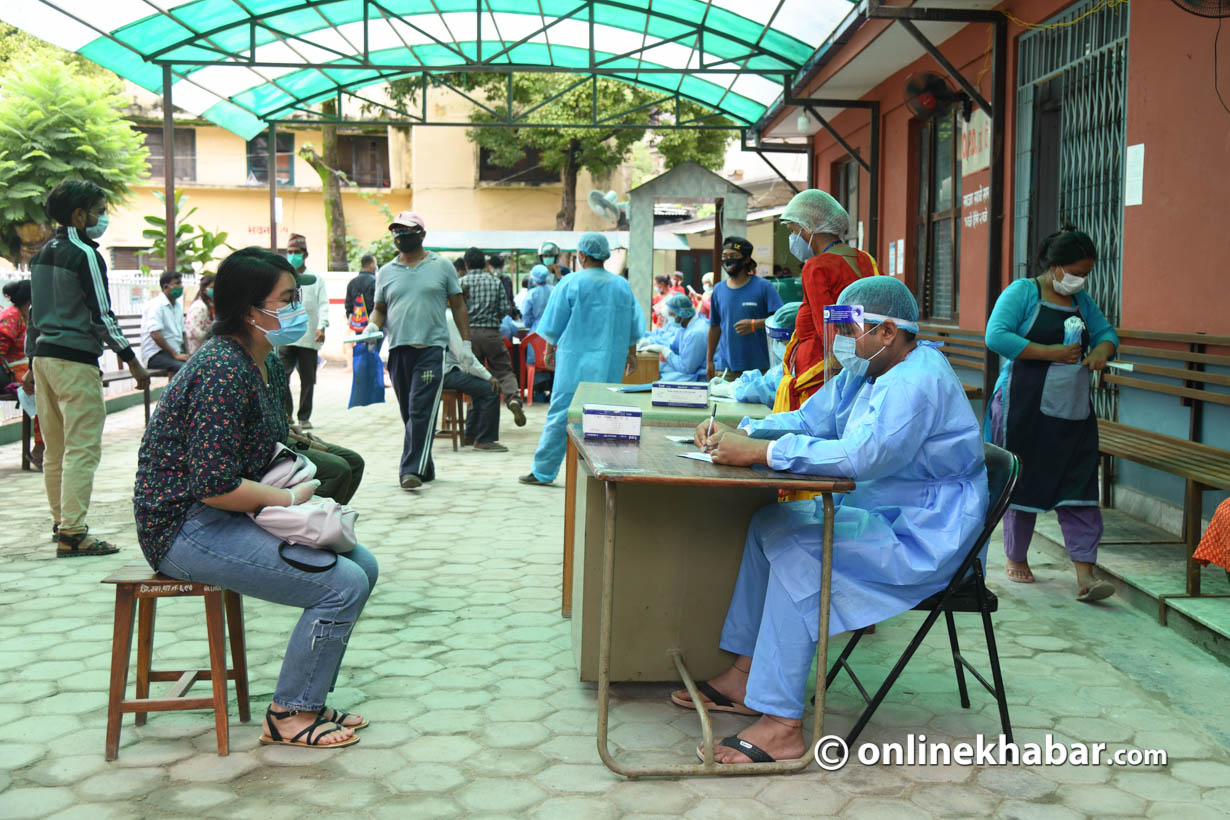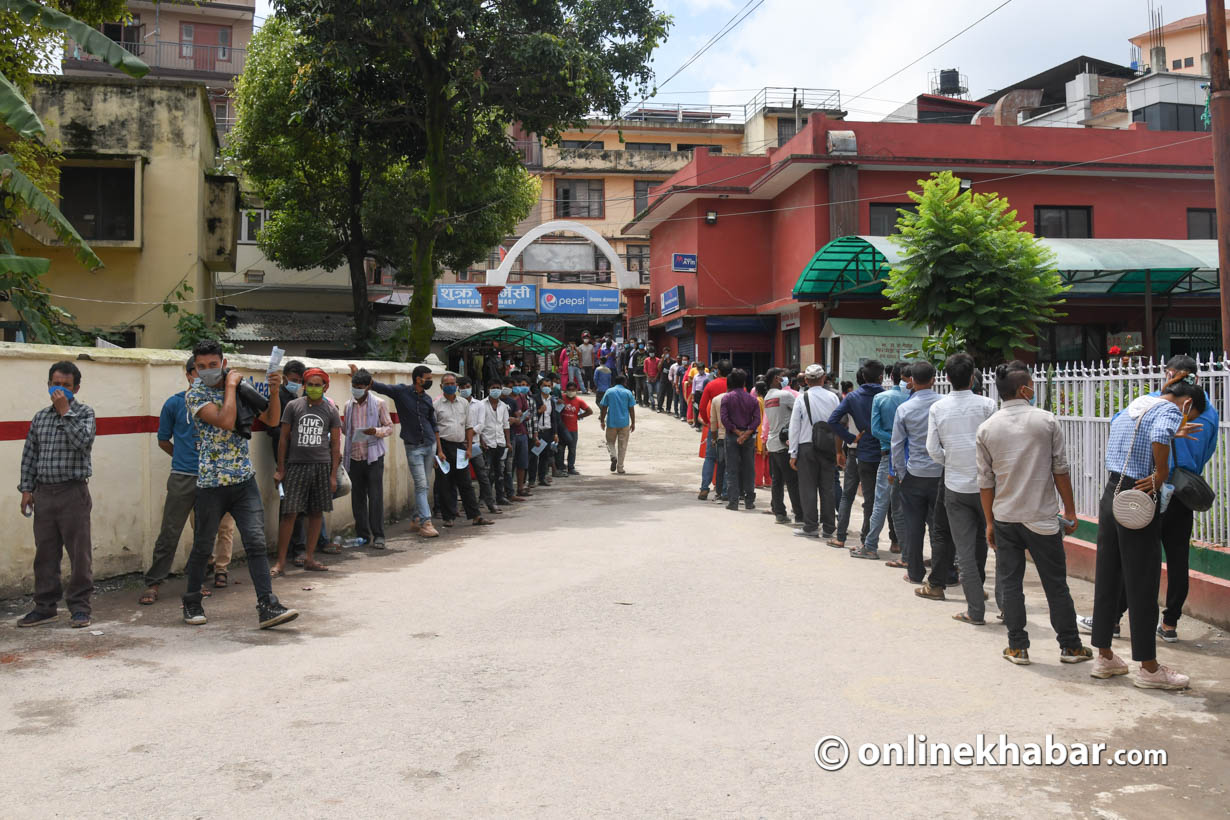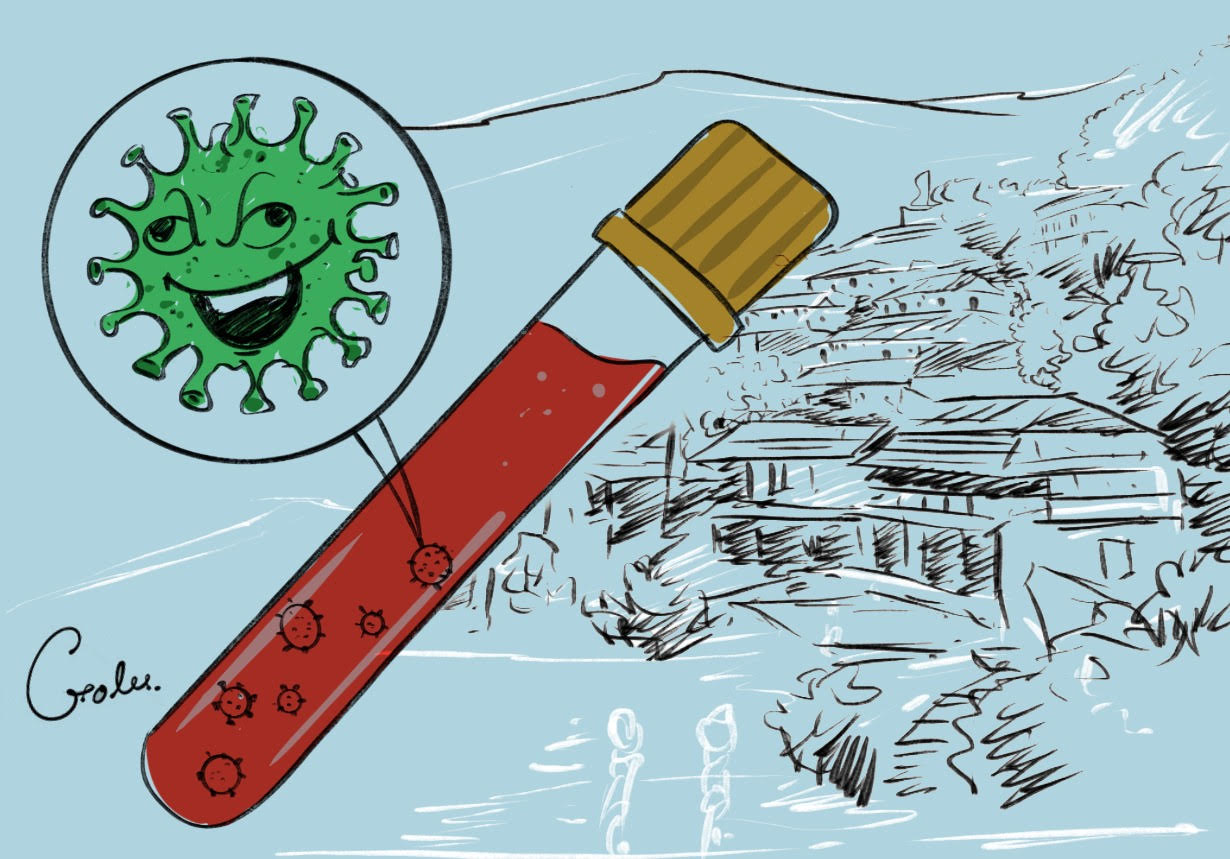
With the onset of Covid-19 at the end of last year, experts all around the globe have been emphasising on broadening the test. Wider inclusiveness in testing has been proven to be an effective approach to monitoring the spread of this virus. But, all countries around the globe, especially like Nepal, are struggling with the scarcity of diagnostic test kits and mass testing has not been implemented widely. Nations are compelled to conduct fewer tests with a narrow boundary due to different reasons.
Due to all this, asymptomatic cases could spread widely across communities, which might lead to the circumstances that could go out of hand. In this context, the method we are discussing here could be quite effective to test numerous folds of the population with fewer diagnostic kits. The preliminary idea is to test swab samples of numerous individuals in one go by mixing up the samples through the RT-PCR method. This method could be referred to as ‘pooled’ or ‘group’ testing.
The method

In this approach, individuals could be tested in two stages. In the first phase, swab samples of many people (two to 11 people, based on the total group size) in close proximity could be taken, mixed and be regarded as one sample, referred to as the ‘super sample’. So, this ‘super sample’ could be tested, and if the test comes out positive, it would mean that at least one of the samples is positive. So, samples of all the people of that particular positive lot could be taken individually and tested individually to confirm the status of each individual. But, if the super sample tests negative, we could save nine kits while testing 10 individuals. In a scenario where the positivity rate is low, this method is expected to save a ton of diagnostic kits making mass testing easily accessible, to economically backward nations like Nepal as well.
The RT-PCR method is regarded to be the most reliable method to track the coronavirus infection in the human body. It is really specific and sensitive. It can detect as little as one virus particle just from a sample. So, in short, this method of testing for the virus is a straightforward biochemical reaction that looks for the virus’ genetic signature in the swab sample collected from individuals suspected of the disease.
The relevance of group testing depends on one decisive assumption that when swab(s) of coronavirus positive individual(s) is mixed with other swabs that of negative individuals, the result obtained after testing the super sample will always come out positive. The entire methodology is an utter failure if this assumption is to be false, but experiments conducted have shown results in its favour.
In an experiment conducted at the Rambam Medical Centre and the Technion in Haifa, in Israel, microbiologists conducted a pooled test that comprised of up to 32 and then 64 samples of respective individuals at a time. They found that this type of methodology could yield a positive result even if only one of the 64 samples were to be positive. In another attempt at the German Red Cross Blood Donor Service and Institute for Medical Virology at the hospital in Goethe University in Frankfurt, Germany, researchers performed a field study with samples of 50 patients pooled together. This pool was then divided into 10 smaller mini-pools with five samples each. The 50 individuals were tested individually as well. Out of the 50, five individuals were deemed positive and were across four different mini-pools. These four mini-pools showed positive results and the only mini-pool without a single positive sample showed a negative result.
Suitability
Now, let’s have a look at the countries which could be benefited. It is the countries with a lower positivity rate and incidents of community transmission of Covid-19. Calculations suggest that if 1% out of the people tested came out positive, about 20 kits would be sufficient to test about 100 people taking samples in the optimal group size. The positivity rate and the number of diagnostic kits are correlated, in this regard. This methodology seems relevant until the positivity rate of about 29.2%. So, the countries where the infection is already widespread across communities are not likely to benefit much from this methodology.
| Percentage of positivity in testing | The average number of kits required to test 100 people |
| 1% | 19.6 |
| 2% | 27.4 |
| 3% | 33.9 |
| 4% | 38.4 |
| 5% | 42.6 |
| 6% | 46.6 |
| 7% | 50.2 |
| 8% | 53.4 |
| 9% | 56.4 |
| 10% | 59.4 |
Source: Professor Atanu Biswas, Applied Statistics Unit, Indian Statistical Institute, Kolkata
Optimal group size

A group size would be appropriate if it is applicable to use up the minimum number of test kits possible to test 100 individuals. The optimal group size depends on the positivity rate of a particular area. If the positivity rate of a certain area was to be 1%, 11 would be the optimal group size.
| Percentage of positivity in testing | Optimal group size |
| 1.0% | 11 |
| 1.1% – 1.2% | 10 |
| 1.3% – 1.5% | 9 |
| 1.6% – 2.0% | 8 |
| 2.1% – 2.8% | 7 |
| 2.9% – 4.1% | 6 |
| 4.2% – 6.5% | 5 |
| 6.6% – 12.3% | 4 |
| 12.4% – 22.5% | 3 |
| 22.6% – 29.2% | 2 |
Source: Professor Atanu Biswas, Applied Statistics Unit, Indian Statistical Institute, Kolkata
In Nepal, the positivity rate is hovering around 10%, as of now. So, the optimal group size would be four and about 60 diagnostic kits would be sufficient to test 100 individuals using this method. Any other group size could make the procedure less effective. If we test the people of close proximity in one go, we could respectively vary the group sizes. Similarly, group sizes for each municipality or ward could be calculated by observing the average positivity rate over a week.
So, in the present context in Nepal, about 10,000 people could be tested using about 6,000 kits and the remaining could be used for mass testing in the same manner. This could effectively reduce time consumption and dedication of health individuals to test a huge portion of the population.
For mass testing, the procedure could be performed in different stages. For example, 20 individuals living nearby could be tested and if their super sample tests positive, they could be further divided into four to five groups of four to five individuals sharing a household or an office space, and their super samples could be tested again. And then, each member of the particular positive lots could be tested individually. As we are discussing mixing samples of people in close proximity, they would have to isolate themselves and get tested if one of them tested positive anyways. However, a larger group of 50, as in the German experiment, is not relevant because the probability of finding a positive result from that huge pool would be close to 100% in Nepal, as of now and that would lead to wastage of more diagnostic kits.
So, in a nutshell, this method could be really effective for a country like ours to conduct mass testing to minimise the spread of this virus in the forthcoming days. The method is being considered by the United States health experts, including Dr Anthony Fauci, as a decisive approach. This method is being used in some states in the US for testing the legitimacy and reliability of this methodology and by far the results seem to be in favour of this method. This system seems to be in use for a long time for surveillance of human immunodeficiency virus (HIV) too. There have been updates that National Public Health Laboratory is considering pooled testing to conduct tests in a wider boundary.
Above mentioned statistics are based on calculations made by Professor Atanu Biswas from Applied Statistics Unit in Indian Statistical Institute, Kolkata.
The writers are science students in Kathmandu.

No comments:
Post a Comment